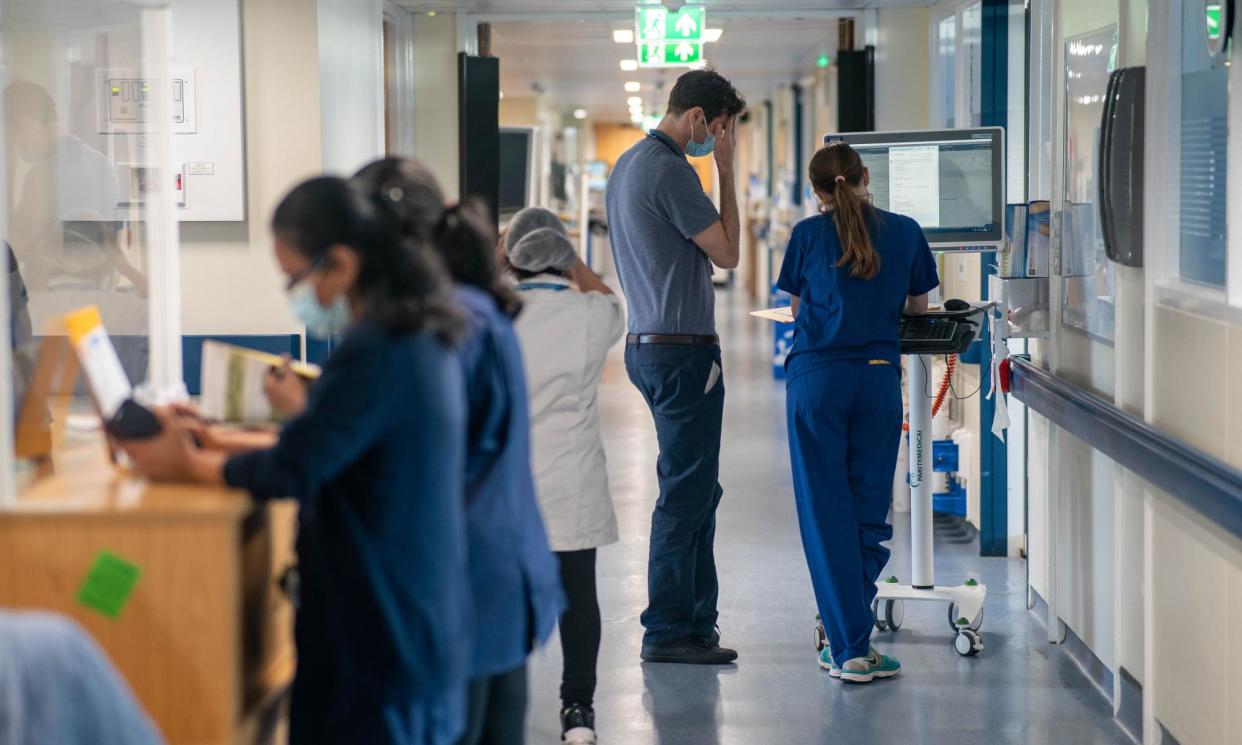NHS waiting lists falling but will stay above pre-Covid levels until 2030, IFS says

The NHS hospital waiting list will be falling “consistently” by the time of the general election but will remain even larger than it was before Covid until 2030, a new report predicts.
In potentially good news for Rishi Sunak, the Institute for Fiscal Studies (IFS) said the waiting list for operations in England is expected to “start to fall consistently but slowly from the middle of 2024”, during the months leading up to the election, which is widely expected in November.
However, in sobering news for the Conservatives and Labour, the thinktank also said that whoever forms the next government will not get the waiting list back down to pre-pandemic levels by the end of the next parliament, which is likely to run until the end of 2029.
The length of time patients are forced to wait for treatments such as A&E care, diagnostic tests and cancer care, as well as planned surgery – already the worst on record – are also likely to remain frustratingly long.
In January last year the prime minister said that “NHS waiting lists will fall and people will get the care they need more quickly” was one of the five promises he asked voters to judge him by. However, he admitted recently that he had not fulfilled that promise.
The waiting list stood at 7.2m when he made the commitment but by December it had risen to 7.6m. Sunak blamed strikes by NHS staff since December 2022, which have forced hospitals to rearrange 1.4m operations and outpatient appointments.
The size of the waiting list, which covers procedures patients are waiting for under the NHS’s referral to treatment scheme, has fallen in each of the past three months, from 7.8m to 7.6m. That is primarily because hospitals have made determined efforts to tackle the backlog, for example by putting on extra sessions of surgery in the evenings and at weekends.
Many of the 6.5m patients on the waiting list are waiting to have a hip or knee replacement or cataract removal to improve their sight.
The waiting list stood at 4.6m when Covid struck. But by the IFS’s calculations it is on course to remain as high as 6.5m in December 2027. If that projection proves correct, it could mean that delays in accessing care remain a stubborn problem for the next administration for most or all of its time in office.
The IFS also says “the NHS and government have failed to achieve most of their waiting list and waiting time targets in England since 2010”, when Labour bequeathed to the coalition government the shortest waiting times the service has ever achieved.
Five of the six waiting list targets set out since 2022 intended to reduce long waits and increase the number of operations hospitals perform, including three Sunak outlined, have either been missed already or are “unlikely” or “very unlikely” to be achieved on time, the IFS said.
While the prime minister’s promise to eliminate waits longer than two years for hospital treatment by July 2022 was “almost met”, he has “failed” on both his overall pledge and also his promise that no one should have been waiting more than 18 months by April last year.
Similarly, NHS England’s promise, made in their post-Covid elective recovery plan in 2022, that hospitals next year would perform 21% more operations than before the pandemic is “almost certainly not going to be achieved”, in the IFS’s view.
“The next government may well inherit a falling elective NHS waiting list in England. But even with a trend pointing in the right direction, waiting lists will still be far higher than they have been – and long waiting times are unlikely to go away any time soon,” said Max Warner, a research economist at the IFS and co-author of the report.
Rory Deighton, director of the acute hospitals network at the NHS Confederation, said that, despite the waiting list having fallen slightly, “there is still a huge mountain to climb and … getting the backlog down is going to take a long time”.
He blamed the size of the waiting list on “years of underinvestment in staff, pay, capital and infrastructure” and said it was huge even before Covid arrived, in remarks that may challenge Sunak’s repeated efforts to portray the backlog as the result of Covid.
Wes Streeting, the shadow health secretary, said the IFS’s findings showed“there is no prospect of patients being seen on time if the Conservatives are given another five years. The longer we give the Conservatives, the longer patients wait.”
Labour will cut the waiting list by ensuring the NHS provides 2m more appointments a year in the evenings and at weekends, paid for by closing the non-dom tax loophole, he added.
A Department of Health and Social Care spokesperson said: “We recognise the challenges the NHS faces, and are taking the long-term decisions needed to make our health service faster, simpler and fairer, cutting waiting lists and ensuring people get the care they need.
“Overall NHS waiting lists have decreased for three months in a row, despite winter pressures and industrial action.”


